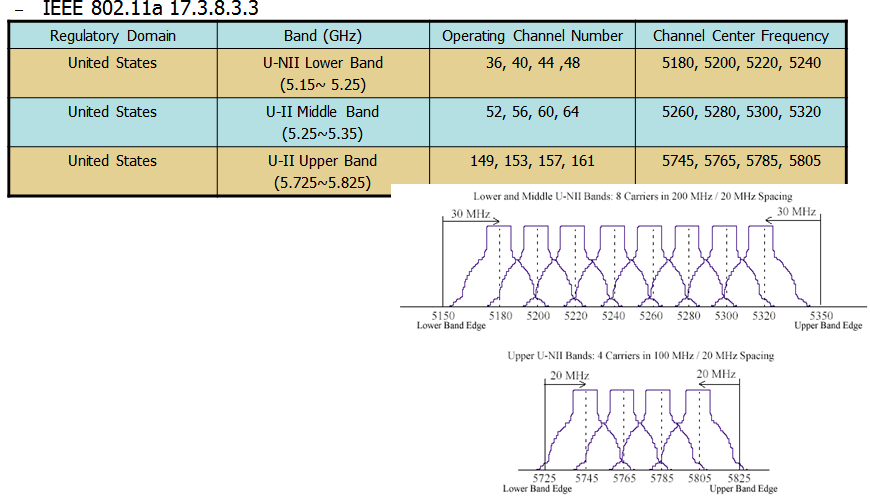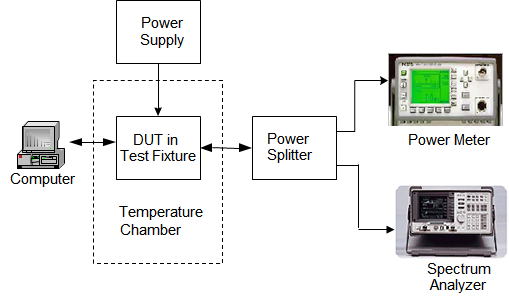This lecture provides the WLAN hardware engineer the essential knowledge of IEEE 802.11 a/b/g physical specification and the basic skill of how to do the EDVT of WLAN.
Transmit Power Level:
1 Operating Frequency
IEEE 802.11a 17.3.8.3.1
5GHz U-II Band For FCC in USA
Channel center frequencies are defined at every integral multiple of 5 MHz above 5 GHz.
Channel center frequency = 5000 + 5 × nch (MHz) where nch = 0.1…200
IEEE 802.11b 18.4.6.1 IEEE 802.11g 19.4.2
2.4GHz ~ 2.484.5GHz in European
Channel center frequencies are defined at every integral multiple of 5 MHz from 2412 GHz to 2472MHz (I.e. Ch1 & Ch13)
2.4GHz ~ 2.497 GHz in Japan
2Operating Channel

3 Regulatory Specification

4 Basic Set up of Transmit Power Level

ESA Setup
-Span 110MHz
-RBW 100kHz
-VBW 100kHz (11b)
-VBW 30kHZ (11a/g)
-Sweep Time 500ms
-Detector RMS Average
EDVT Condition
-Nominal Voltage +/- 10%
-3.0V, 3.3V, 3.6V
-Low,Room,High Temperature 0C,25C,60C
Power Selection
-Average Power or Peak Power,
-Power at Antenna connector or EIRP Power
Intel Project (T60H879) Product Specification Example
-17dBm Average Power at Antenna Connector for IEEE 802.11b
-16dBm Average Power at Antenna Connector for IEEE802.11g (6M,9M,12M,18M,24M,36M)
-13dBm Average Power at Antenna Connector for IEEE802.11g(48M)
-12dBm Average Power at Antenna Connector for IEEE802.11g(54M)